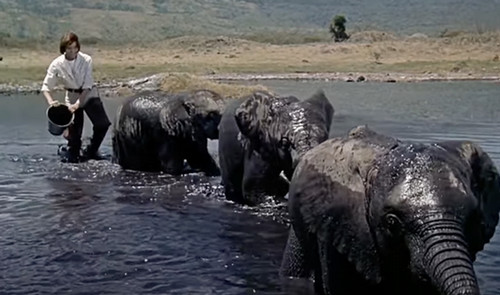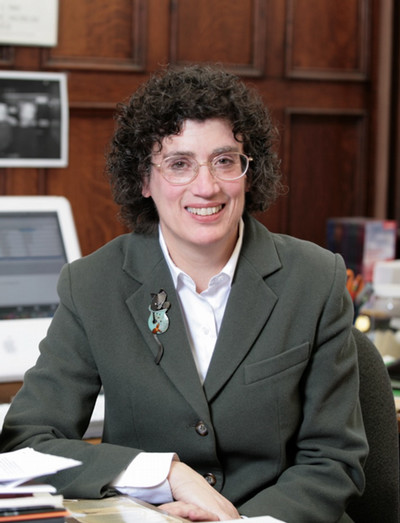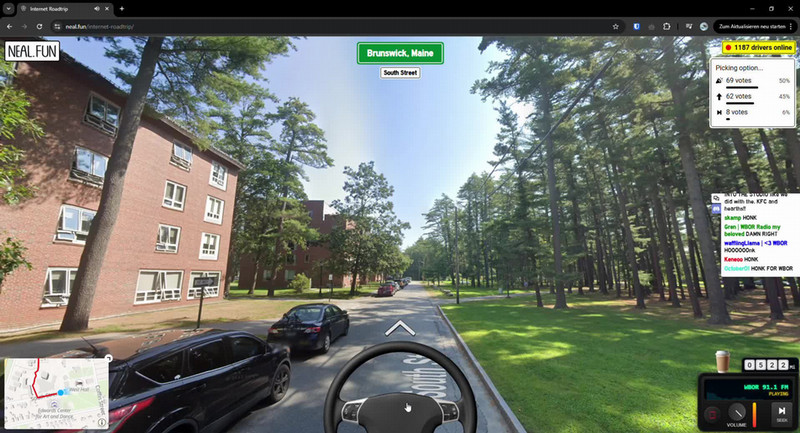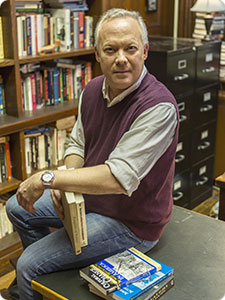How Cutting Up a Dead Elephant Helped Solve an Archaeological Puzzle
By Tom Porter“One weekend I was listening to the radio, and I heard that Ginsberg had died. My brain went ‘oh,’” recalls Professor of Anthropology Susan Kaplan. The Ginsberg in question was a celebrity elephant that had been residing at a Boston zoo.
Ginsberg became an animal celebrity in the early 1960s after starring alongside John Wayne in a movie called Hatari, a romantic comedy featuring an orphaned baby elephant that is taken from the wild into a zoo. (The film is probably best-known for its soundtrack, “Baby Elephant Walk” by Henry Mancini.)

Ginsberg had been a star attraction at Boston’s Franklin Zoo until she broke a leg and developed a fatal blood clot in 1977, at the age of twenty-three (young for an elephant).
At the time, Kaplan was a predoctoral student at the Smithsonian Institution in Washington, DC, working in the laboratory of renowned archaeologist Dennis Stanford. Kaplan, who also directs Bowdoin’s Peary-MacMillan Arctic Museum and Arctic Studies Center, was featured recently on Slate Magazine’s “Decoder Ring” podcast, which aims to crack cultural mysteries. This particular episode explores experimental archaeology, an approach to the subject in which archaeologists try to recreate, use, and test certain artifacts to learn more about the past.
Stanford was a specialist in Paleo-Indian studies, explains Kaplan, meaning he studied the first people who inhabited the Americas and how they lived. At the time he was particularly interested in mammoth bones, she says. “He was excavating these piles of broken bones, and he had formulated a theory that human beings were hunting these mammoths to make bone tools,” recalls Kaplan. But, she adds, this theory posed many unanswered questions: Were humans capable of killing these creatures? If so, what weapons would they have used? How would they have butchered them? What tools would they have used? Could they have used mammoth bones as tools? “The archaeologists had so many things they wanted to know, but without a mammoth they couldn't get any answers,” says Kaplan.

Mammoths, of course, are extinct, but elephants are not, and they’re about as close as you can get to a mammoth, with similar hide and bone structure, says Kaplan. “If the archaeologists couldn't answer their questions by running an autopsy on a mammoth, maybe a newly deceased elephant would do?” she asked herself, thinking particularly about Ginsberg.
She mentioned this to her boss, Dennis Stanford, who said that if she was able to get hold of a leg bone, that might be useful. Kaplan did better than that. Making a lot of phone calls, Kaplan convinced the Franklin Zoo to give her the entire carcass, “minus the head and the internal organs, which were already promised.”
There were certain logistical challenges to overcome, she explains. For a start, the zoo would not deliver the carcass to the Smithsonian, but fortunately the Smithsonian’s “whale curator” had a giant flatbed truck, normally used for transporting whale carcasses, which he made available.
In another complicating factor, the truck transporting Ginsberg’s cadaver was stopped at the state border due to concerns over disease. The zoo vet was duly contacted, declaring the elephant “healthy but dead.” Finally, Ginsberg arrived at the Smithsonian facility in the mountains of Virginia. “Luckily it was a very, very cold winter,” explains Kaplan, “and she was mostly frozen.” The low temperatures meant Ginsberg’s body was able to remain outside for a while, on a pallet. “In the meantime, Dennis Stanford is on the phone to all his colleagues, calling experts in Paleo-Indian studies” who began crafting tools and weapons—the same tools that early humans would have used—for the upcoming experiment.
In was in March 1977, says Kaplan, with spring fast approaching, that around a dozen archaeologists and other experts showed up at the facility where Ginsberg was kept, eager to begin dismembering the “modern” mammoth. “People were very excited,” she reflects. They wanted to know how effective these tools were when it came to cutting through thick elephant hide and the meat and bones that lay beneath. With the weather warming up, they also learned you had to work pretty fast if you didn’t want the carcass to spoil. “It's a little macabre,” Kaplan admits, “but, again, they had these questions that they simply could have not answered without doing these experiments. And, remember, this elephant had already died. There was nothing cruel or unethical about these experiments, as strange as they might have been.”
“If the archaeologists couldn't answer their questions by running an autopsy on a mammoth, maybe a newly deceased elephant would do?”
Forty-eight years later, Kaplan recalls her amazement as she witnessed the experiment she had brought about. “The thing about archaeology is that, in order to try and understand human behavior that you can no longer see, all you have is this material culture, and so you want to use as many tools as you can to try to understand what the behavior of people would have been.”
The Ginsberg Experiment, as it is known, did indeed answer questions about how early Americans had lived, hunted, and eaten, and it garnered attention in the mainstream media, as well the academic press.
“I don’t know if it was the first experimental archaeology project,” says Kaplan, “but it's certainly brought … this kind of work into the academy.” The field of experimental archaeology has not looked back.
Related Stories
-
 July 07, 2025An online game where users collectively take a virtual road trip and, in so doing, are exposed to a wealth of local radio stations, led to a massive spike in listenership earlier this year at WBOR, Bowdoin’s student radio station.
July 07, 2025An online game where users collectively take a virtual road trip and, in so doing, are exposed to a wealth of local radio stations, led to a massive spike in listenership earlier this year at WBOR, Bowdoin’s student radio station. -

-
